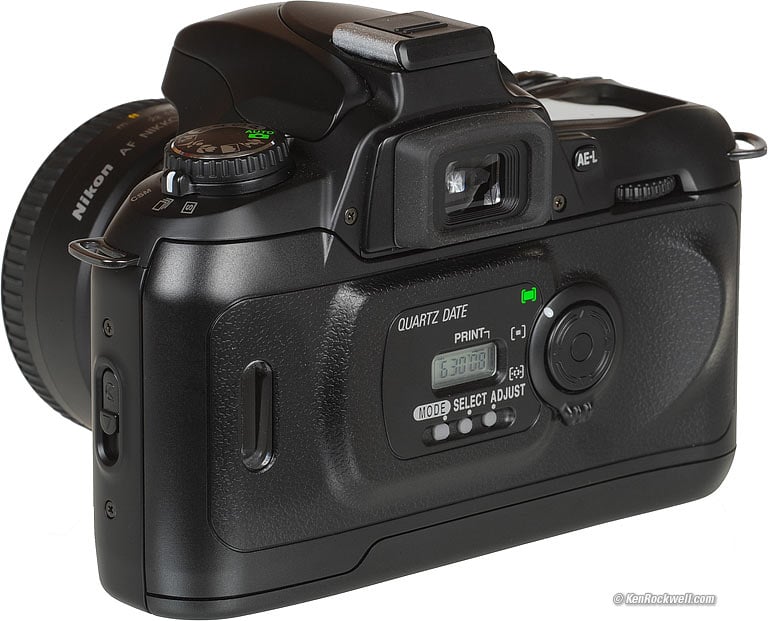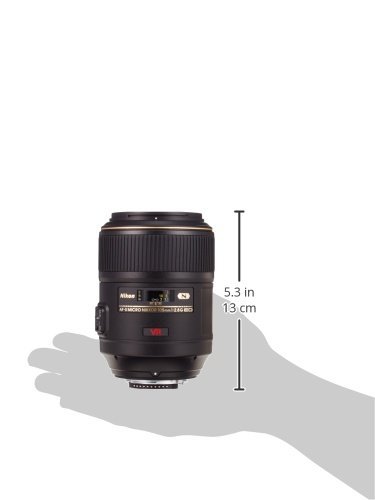.Nikon INSTRUCTION MANUAL. Crisp, precise film advance and shutter release assure superb frame-per-second continuous shooting. The Nikon N65/N65QD is so compact and lightweight, anyone can handle it. N65/ N65QD-a camera that is sure life.Nikon recommends that you have your camera serviced by an authorized dealer or service center at least once every two years.
The lens should work on the Nikon dSLRs and likewise, even the 'G' digital lenses would work on the N65 in full Auto or Shutter priority. I have more film bodies than I can use at the moment, but it would be a nice compliment to the N75, N80, and N90. Shop for the latest Nikon digital camera lenses, including Nikon Zoom lens, Nikon Macro Lens, Nikon Telephoto lenses and more at Best Buy.
Using your camera correctly The Nikon N65/N65QD's performance has been optimized for use with Nikon brand accessories. May not meet Nikon's criteria for specifications, and nonconforming.Introduction Nomenclature.LCD PanelNiewfinder Display Available Exposure Modes. Start Shooting Immediately PREPARATION. 15-24 Install Batteries Mount Lens. Load Film.Date and Time (N65QD only).
About Shutter Release Button BASIC OPERATION. 25-41 Set Focus Mode to AF Set Exposure Mode to 3. DETAILED OPERATION. Focus Mode Focus Area.AF-Assist Illuminator.48-49 Focus Lock Shooting in Each Exposure AUTO mode Auto-Multi Program/Flexible Program Shutter-Priority Auto Aperture-Priority Auto Manual. Exposure Compensation Auto Exposure Bracketing Multiple Exposure. Film Rewind Diopter AdjustmenWiewfinder Accessories Depth-of-Field Preview.Focus mode selector (PP. 44-45) Lens release button (P.19) Flash lock-release 80)/ Flash sync mode button Focus area 46)/ AF-Assist Illuminator cancel button Camera strap eyelet Exposure mode dial Self-timer/Remote control button 40/69) Auto Exposure Bracketing Multiple Exposure 64)!
Film rewind button Accessory shoe. N65QD only: Data 1.:.:.'
-', T., -'t-;;-':nlili OOOO.oC fimD SELECT ADJUST. N65QD. The camera back of the N65 differs from the imprint LCD/buttons Date/time display LCD Year indicator MODE available SELECT button to be adjusted Month indicator. LCD panel Remote control Shutter speed Exposure Compensation Flash sync mode Focus area. The illustrations are fu NOTE: About lCD LCD panel and viewfinder displays tend to turn darker at high temperatures and have slower response time at low temperatures.
Temperature returns to -labeled for your reference. Viewfinder display Focus area (focus brackets) Focus indicator Focus area (P. Shutterspeed 12mm-dia. 30/46) r- reference circle for Center- Weighted Metering area Flash ready-light (P. Flash recommended indication (P. 76/80) Exposure Compensation Electronic analog exposure 59)/Exposure Compensation value display (P.' The exposure mode dial of the Nikon N65/N65QD can be divided into two sections.

One is the user-controlled exposure mode with Auto-Multi Program, Shutter-Priority Auto, Aperture-Priority Auto or Manual exposure modes, where the photographer can determine various exposure factors. Point-and-shoot AUTO mode (P.
28, 51) Camera automatically controls all the exposure settings. Pictures right Portrait mode (P. 37) Use this mode to background is blurred to accentuate your main subject.' , Open the battery chamber and camera's power is off (page 16). Attach the lens and turn the power switch on (page 18). With CPU Nikkor lens other than minimum and lock.
Open the camera back and install the film (page 20). Set the focus mode selector to AF (autofocus) (page 26). Set the exposure mode dial to Hold the camera properly, compose frame and focus by lightly pressing the shutter release button (page 30). Confirm focus indicator. Appears without blinking and slowly depress the shutter release button (page 32).
Film starts to rewind automatically when it reaches the end of the roll (page 33).PREPARATION. This section introduces the various operations necessary before you start shooting. Install batteries and check battery power. Mount. Load film.
Set date and time (N65QD only). About shutter release button.1' ) pr. '.- Use two CR2-type 3V lithium page 94.) NOTE: Storing batteries Keep the batteries out of children's reach. If swallowed, contact a doctor immediately. (For 'Notes Check points.
F-'J AUTO. F-'J AUTO LCD panel when When the power switch is turned off with batteries installed, the frame counter display remains on in the LCD panel. Turn the power switch on and confirm battery power with the appears: appears.- Turn the power switch off and mount the lens to the camera body.CPU contacts of CPU Nikkor lens G-type Nikkor lens The G-type Nikkor lens has no aperture camera. When camera is left unattended without lens When you leave the camera lens attached be sure to attach body cap (page or optional body cap BF-1A. (BF-1 body cap cannot be used.) NOTE: Non-CPU Nikkor lens When a non-CPU Nikkor lens is attached and the power switch is turned blinks in the LCD panel and F-(except in Manual exposure mode).-Turn the power switch on and film speed will be back after loading film automatically advances the film. FS.6 B - E::3 AUTO OX-coded film vWit&hDDXX-codeddffilm automatically between ISO Film speed is set to ISO 100 with non-DX- coded film.
Check points. Avoid direct sunlight when changing film. You can check the number of available exposures on the film roll and film speed through the film confirmation window.i.- This camera allows you to imprint Year/Month/Day, Day/Hour/Minute (24- hour clock), Month/Day/Year or Day/Month/Year on your picture in any exposure mode. (For. Adjusting date and time (Example: year 2001, January 15) NOTE: Battery requirements for imprinting Imprinting of date/time requires one CR2025 batteries required for the camera body.

Nikon N65 Lens Compatibility System
Changing battery for'imprinting NOTE: Storing batteries Keep the batteries out of children 's reach immediately. (For ' Notes on Open camera back, remove the battery chamber cover for remove the used battery. Use a pointed object to remove the battery. Insert a new CR2025 3V lithium battery with side facing up.Lightly pressing the shutter release button and holding it halfway activates the camera's exposure meter and pressing it all the way releases the shutter.Before Lightly pressing.BASIC OPERATION. This section features the settings for most common picture-taking situations using AUTO mode even for the inexperienced beginner. Shooting modes/functions explained in this section are as follows: Lens attached Focus mode Focus Area Exposure metering system Exposure mode Flash sync mode Automatically, ',.
areas. When (AUTO mode, page 51) (page 36) (except Close-Up mode), the N65/N65QD automatically selects Mode with Closest-Subject operation, making it unnecessary to switch the focus area. (autofocus). Situations where autofocus may not work as expected Autofocus may not work as expected in the following such situations, focus manually using the clear matte field (page 45) or focus on a different subject located at the same lock (page 50) then recompose.
(AUTO. When mode), Matrix Metering. Check if the AF Area mode is set to Mode with Closest-Subject details. N65/ N65QD contrast- (AUTO mode) camera.